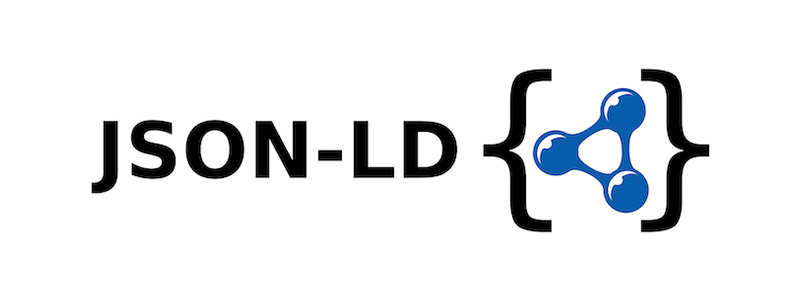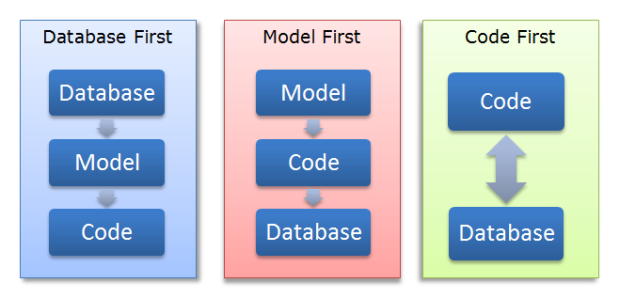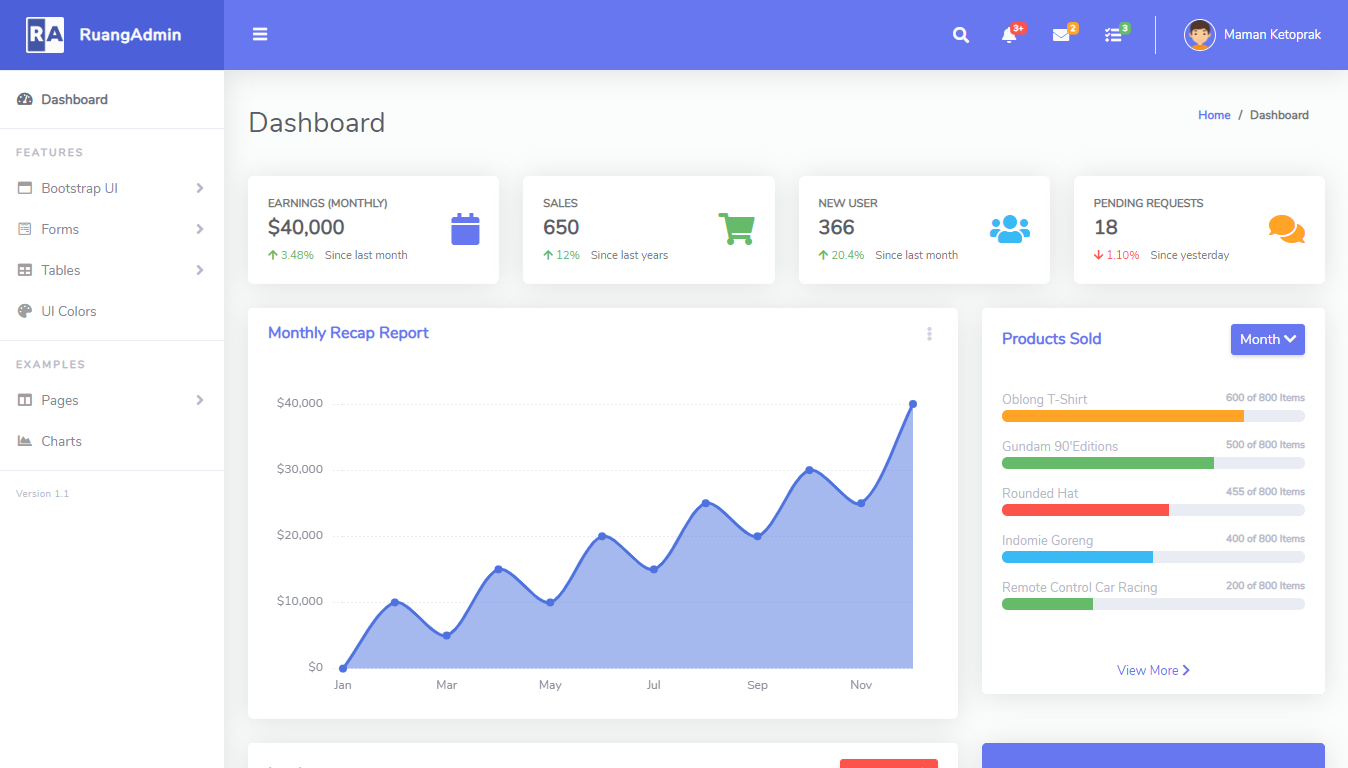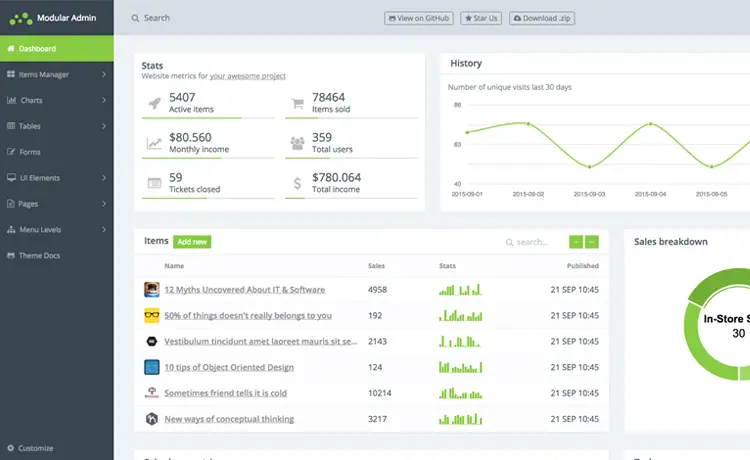Dynamic Menus in ASP.NET Core
By Tan Lee Published on Feb 28, 2025 536
1. Enable Sessions in ASP.NET Core
Sessions are used to store user-specific data, such as menu items, across requests. To enable sessions, configure them in the Program.cs file.
var builder = WebApplication.CreateBuilder(args);
// Add session services
builder.Services.AddSession(options =>
{
options.IdleTimeout = TimeSpan.FromMinutes(30); // Session timeout
options.Cookie.HttpOnly = true; // Prevent client-side script access
options.Cookie.IsEssential = true; // Mark the session cookie as essential
});
var app = builder.Build();
// Add session middleware to the pipeline
app.UseSession();
app.Run();2. Define the Menu Model
Create a model to represent the menu structure. For example, you can define a Menu class with properties like Id, Name, Action, and SubMenus.
public class Menu
{
public int Id { get; set; }
public string Name { get; set; }
public string Action { get; set; }
public string Controller { get; set; }
public List<Menu> SubMenus { get; set; } = new List<Menu>();
}3. Store Menu Data in Session
After a user logs in or during application startup, fetch the menu data (e.g., from a database or configuration) and store it in the session.
public class AccountController : Controller
{
[HttpPost]
public async Task<IActionResult> Login(LoginModel model)
{
if (ModelState.IsValid)
{
// Authenticate the user
var user = await _userService.AuthenticateAsync(model.Username, model.Password);
if (user != null)
{
// Fetch menu data based on user role
var menus = await _menuService.GetMenusByRoleAsync(user.Role);
// Store menu data in session
HttpContext.Session.SetString("Menus", JsonConvert.SerializeObject(menus));
return RedirectToAction("Dashboard", "Home");
}
else
{
ModelState.AddModelError("", "Invalid username or password.");
}
}
return View(model);
}
}4. Retrieve and Display Menu in _Layout.cshtml
In the layout page (_Layout.cshtml), retrieve the menu data from the session and render it dynamically.
Inject IHttpContextAccessor: Inject IHttpContextAccessor to access the session in the view.
@inject IHttpContextAccessor HttpContextAccessor @using Newtonsoft.Json
Retrieve Menu Data: Deserialize the menu data from the session.
@{
var menusJson = HttpContextAccessor.HttpContext?.Session.GetString("Menus");
List<Menu> menus = new List<Menu>();
if (!string.IsNullOrEmpty(menusJson))
{
menus = JsonConvert.DeserializeObject<List<Menu>>(menusJson);
}
}Render the Menu: Use a loop to render the menu dynamically.
<nav class="navbar navbar-expand-lg navbar-light bg-light">
<div class="container-fluid">
<a class="navbar-brand" href="/">My App</a>
<button class="navbar-toggler" type="button" data-bs-toggle="collapse" data-bs-target="#navbarNav" aria-controls="navbarNav" aria-expanded="false" aria-label="Toggle navigation">
<span class="navbar-toggler-icon"></span>
</button>
<div class="collapse navbar-collapse" id="navbarNav">
<ul class="navbar-nav">
@if (menus != null)
{
@foreach (var menu in menus)
{
<li class="nav-item">
<a class="nav-link" href="@Url.Action(menu.Action, menu.Controller)">@menu.Name</a>
@if (menu.SubMenus != null && menu.SubMenus.Any())
{
<ul class="dropdown-menu">
@foreach (var subMenu in menu.SubMenus)
{
<li><a class="dropdown-item" href="@Url.Action(subMenu.Action, subMenu.Controller)">@subMenu.Name</a></li>
}
</ul>
}
</li>
}
}
</ul>
</div>
</div>
</nav>Use View Components for Reusability
For better organization, you can encapsulate the menu rendering logic in a View Component.
Create a View Component: Create a MenuViewComponent class.
public class MenuViewComponent : ViewComponent
{
private readonly IHttpContextAccessor _httpContextAccessor;
public MenuViewComponent(IHttpContextAccessor httpContextAccessor)
{
_httpContextAccessor = httpContextAccessor;
}
public async Task<IViewComponentResult> InvokeAsync()
{
var menusJson = _httpContextAccessor.HttpContext?.Session.GetString("Menus");
List<Menu> menus = new List<Menu>();
if (!string.IsNullOrEmpty(menusJson))
{
menus = JsonConvert.DeserializeObject<List<Menu>>(menusJson);
}
return View(menus);
}
}Create the View Component View: Create a view for the component at Views/Shared/Components/Menu/Default.cshtml.
@model List<Menu>
<ul class="navbar-nav">
@foreach (var menu in Model)
{
<li class="nav-item">
<a class="nav-link" href="@Url.Action(menu.Action, menu.Controller)">@menu.Name</a>
@if (menu.SubMenus != null && menu.SubMenus.Any())
{
<ul class="dropdown-menu">
@foreach (var subMenu in menu.SubMenus)
{
<li><a class="dropdown-item" href="@Url.Action(subMenu.Action, subMenu.Controller)">@subMenu.Name</a></li>
}
</ul>
}
</li>
}
</ul>Render the View Component in _Layout.cshtml: Invoke the view component in the layout page.
<nav class="navbar navbar-expand-lg navbar-light bg-light">
<div class="container-fluid">
<a class="navbar-brand" href="/">My App</a>
<button class="navbar-toggler" type="button" data-bs-toggle="collapse" data-bs-target="#navbarNav" aria-controls="navbarNav" aria-expanded="false" aria-label="Toggle navigation">
<span class="navbar-toggler-icon"></span>
</button>
<div class="collapse navbar-collapse" id="navbarNav">
@await Component.InvokeAsync("Menu")
</div>
</div>
</nav>By following these steps, you can implement dynamic menus in ASP.NET Core that adapt to user roles and permissions. Using sessions and view components ensures a clean, maintainable, and scalable solution.
- Implement security headers for an ASP.NET Core
- How to Initialize TagHelpers in ASP.NET Core with Shared Data
- Boost Your ASP.NET Core Website Performance with .NET Profiler
- The name 'Session' does not exist in the current context
- Implementing Two-Factor Authentication with Google Authenticator in ASP.NET Core
- How to securely reverse-proxy ASP.NET Core
- How to Retrieve Client IP in ASP.NET Core Behind a Reverse Proxy
- Only one parameter per action may be bound from body in ASP.NET Core





